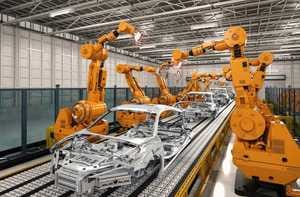
If you work in the manufacturing industry or a warehouse or fulfillment center in Georgia, you could share your work space with a robot. How do you feel about that? Some believe that robots will take over their jobs, but the truth is that, often, they only take over the tasks that put your health and safety at risk. Robots do not get sick, need a vacation or parental leave, and they will make the same repetitive motion over and over again.
While robotics do the mundane and repetitive tasks, you can put your skills to work on more challenging tasks. However, their mere presence requires risk assessment and mitigation of hazards to protect you and your human co-workers.
Common risks you might face
The Occupational Safety and Health Administration says most robotic related workplace accidents occur during programming, installation repairs, maintenance and testing. AI and robotics continue to evolve, but OSHA has identified the following common risks that currently threaten employee safety:
- Unauthorized access: Areas in which industrial robots are in safeguarded areas must have strict access control. Unauthorized access can cause severe injuries to workers who are unfamiliar with the risks.
- Control errors: Faulty control systems in robots can cause erratic and unpredictable behavior or produce increased levels of hazardous energy potential. Errors can occur in the software and the control system to interfere with radiofrequency and the electromagnetism of the robot.
- Environmental sources: These factors are mostly unanticipated, and sudden environmental changes can also affect the robot’s radiofrequency and electromagnetism, jeopardizing the safe performance of the robot. Safety protocols must be in place to mitigate hazards caused by power losses or power surges.
- Mechanical failures: Such failures can cause unanticipated, dangerous robotic operations.
- Improper installation: The failure to follow the design and installation requirements along with the layout of utilities and equipment of a robot to the letter can lead to numerous hazards. There must be no variance from the original plan during installation.
- Power systems: Disruptions of electric, hydraulic or pneumatic power sources can lead to energy releases that could cause electrical shocks. It can also cause electrical overloads that pose fire hazards.
- Human errors: This is the most unpredictable hazard of all because human errors can cause most of the above dangers. Potential mistakes by humans include programming, maintenance, interfacing, activation of the control panel and multiple other aspects of the robot safety that relies on human input.
Safety authorities say there are two primary types of safety hazards when it comes to industrial robots — mechanical and human. Along with errors made by humans, you must look out for, and avoid, complacency, distractions and fatigue because they are the source of many work-related accidents.
What will happen if you suffer a robot-related injury?
The Georgia workers’ compensation insurance system is a no-fault program that will pay your medical expenses immediately, and a portion of your lost wages if you suffered a temporary disability. Dealing with the administrative and legal steps of the benefits claims process while you would instead focus on recovering and returning to work could be challenging. For that reason, many injured workers in Georgia choose to retain an experienced workers’ compensation attorney to take care of it.



